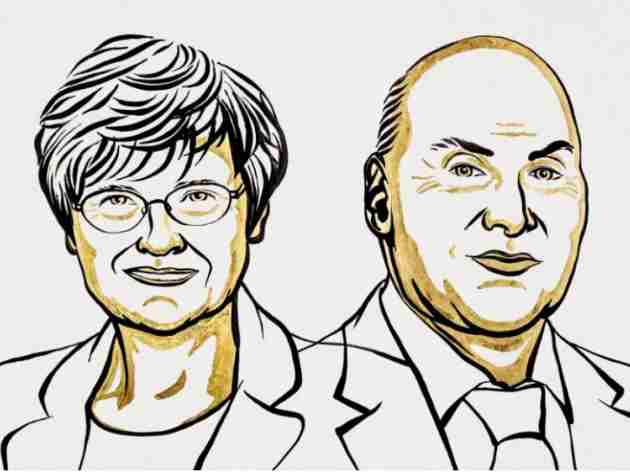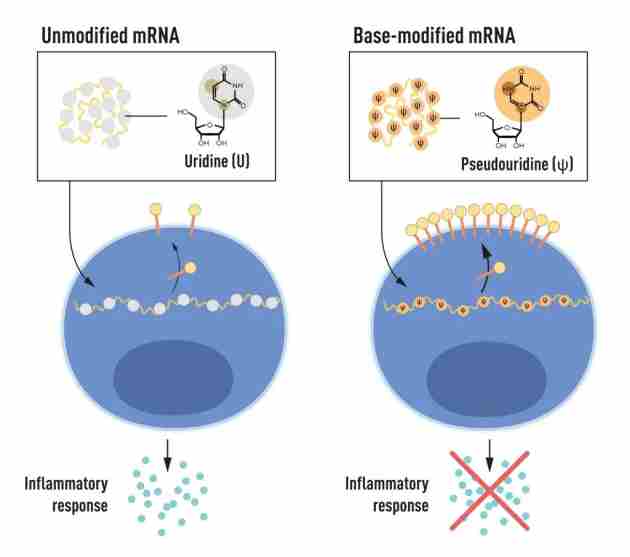
Katalin Karikó and Dr. Drew Weissman, American scientists whose long collaboration has revolutionized the making of vaccines and raised the prospect of new treatments for a range of afflictions, were awarded the Nobel Prize in physiology or medicine Monday for their work on messenger RNA.
Hungarian-born biochemist Karikó, 68, spent nearly a decade at BioNTech, the German pharmaceutical firm that collaborated with drug giant Pfizer to produce the pandemic’s first vaccine against the virus that causes COVID-19. Physician-scientist Weissman, 64, is a professor of vaccine research at the University of Pennsylvania’s Perelman School of Medicine.
Their work has armed scientists and drug companies with the means to turn the body’s cells into manufacturers of its own medicine.
Though mRNA rose to public prominence for its use in COVID-19 vaccines, the technology is expected to become a major basis for flu vaccines, allowing shorter lead times and more accurate matching between circulating influenza strains and yearly shots.
Beyond that, it could play a key role in treating sickle-cell disease and shows promise for the autoimmune disorder multiple sclerosis. Its potential use in treating cancers is also opening new avenues for arming the immune system against malignancy.

Karikó was first introduced to ribonucleic acid, or RNA, in 1978 and said she’s been “passionate about this fragile molecule ever since.” She was exploring DNA’s use of messenger RNA to deliver specific work orders to cells when she met Weissman over a photocopy machine at the University of Pennsylvania in 1997.
Antiretroviral medications were just entering wide use against HIV/AIDS at the time, and Weissman was trying to design a vaccine against a disease that was killing hundreds of thousands of Americans each year. He had been intrigued by the possibility that mRNA could induce cells to produce proteins that the body was missing or that it needed to heal itself. But he knew that efforts to repurpose this delicate nucleic acid for medical purposes had hit a host of stumbling blocks.
Karikó was intimately familiar with the obstacles to mRNA’s use. And she was well aware of the skepticism directed its way by the scientific community. After earning a PhD in biochemistry at Hungary’s University of Szeged and emigrating to the United States in 1985, she had been determined to find ways to harness mRNA for treatments.
By the time she met Weissman, Karikó had been an itinerant postdoctoral researcher for more than a decade. At Temple University in Philadelphia, the Uniformed Services University of the Health Sciences in Bethesda, Md., and the University of Pennsylvania, she had tried to drum up support for work on mRNA’s biomedical uses. She had a drawer full of rejected grant proposals to show for it.
Weissman’s research pedigree was more promising. A biochemistry major at Brandeis University, Weissman earned his medical degree and a PhD at Boston University and was awarded a postdoctoral fellowship in Fauci’s lab at the National Institutes of Health. While there, he studied a key node of the mammalian immune system — dendritic cells — and their perturbation in HIV/AIDS.
Weissman knew that messenger RNA had an incidental effect on dendritic cells: Their interaction touched off an immune response that ignited dangerous inflammation across the body.
Weissman and Karikó both realized that until that problem could be fixed, mRNA would be of limited biomedical use, and no use at all in making vaccines. There was also the problem of mRNA’s fragility outside of cells: Unpackaged, it was easily chewed up by enzymes, and getting it through cells’ outer walls was no picnic either.
Key publications:
Karikó, K., Buckstein, M., Ni, H. and Weissman, D. Suppression of RNA Recognition by Toll-like Receptors: The impact of nucleoside modification and the evolutionary origin of RNA. Immunity 23, 165–175 (2005).
Karikó, K., Muramatsu, H., Welsh, F.A., Ludwig, J., Kato, H., Akira, S. and Weissman, D. Incorporation of pseudouridine into mRNA yields superior nonimmunogenic vector with increased translational capacity and biological stability. Mol Ther 16, 1833–1840 (2008).
Anderson, B.R., Muramatsu, H., Nallagatla, S.R., Bevilacqua, P.C., Sansing, L.H., Weissman, D. and Karikó, K. Incorporation of pseudouridine into mRNA enhances translation by diminishing PKR activation. Nucleic Acids Res. 38, 5884–5892 (2010).
[SS Comment] The advancement of science and its contribution to humanity are fully demonstrated in this Nobel Prize in Physiology and Medicine! We can see that the results of this research have already been published, but they have not been valued and applied, but this does not mean that the research is useless! As the saying goes, 'I am born with a talent that will be useful,' let alone a great Nobel Prize level scientific research achievement! We sincerely congratulate two great scientists whose scientific research achievements have made outstanding contributions to the cause of human health!
Please specify source if reproduced2023 the Nobel Prize in Physiology or Medicine | SCISOON

